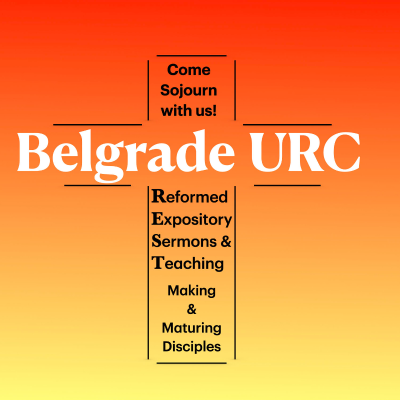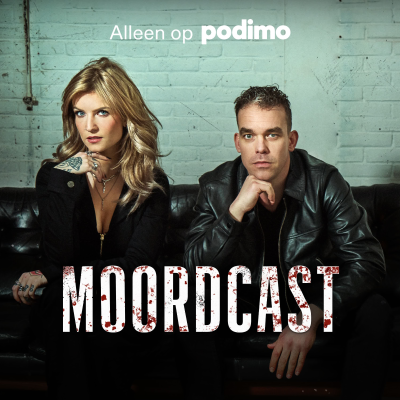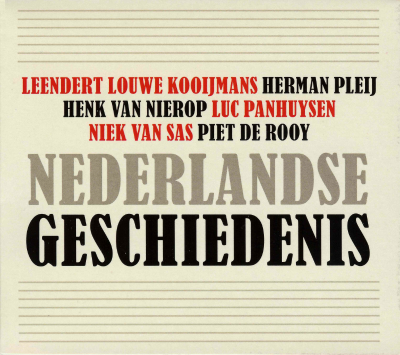
Reformed & Expository Preaching
Engels
Geschiedenis & Religie
Tijdelijke aanbieding
1 maand voor € 1
Daarna € 9,99 / maandElk moment opzegbaar.
- 20 uur luisterboeken / maand
- Podcasts die je alleen op Podimo hoort
- Gratis podcasts
Over Reformed & Expository Preaching
We are a Bible Believing Reformed church in the Bozeman, Belgrade area. Subscribe to our sermon feed or better yet, worship with us each Sunday! May the Lord’s blessing and peace be upon you.
Alle afleveringen
703 afleveringenFor Whom Does Christ Pray? (John 17:4, 9, 20-21; COD 2)
Introduction We spend another week considering the doctrine of Limited Atonement. We examine this doctrine using John 17 and the Canons of Dort. Christ’s pristly work and his compassion is evident as he goes to the cross. Our problem is that we can have a “scarcity mindset” regarding Christ’s work. We might think that limited atonement teaches that there is just enough of Christ’s work to go around. The reality is that this doctrine teaches that Christ’s work is guaranteed to be applied to Christ’s people. Christ does not potentially secure some people, but he certainly secures his people. Christ Accomplishes the Work the Father Gave Him Jesus declares in John 17:4, “I have accomplished the work that You gave Me to do.” This means that Christ is conscious he has an assignment. He has met the requirements for his day’s work. Christ has done his work. His people are not part of a co operative arrangment. Christ did the work that the Father gave him to do. The Canons of Dort rejects the idea that Christ’s death was “without a fixed plan.” Jesus is acting as a servant completing the father’s assignment. If the plan was to save everyone then Christ’s work is sufficient. We will address that potential in a moment. The important thint to note here is that the Father assigned work. Christ consciously accomplished that work. Christ expects his wages. This simply means that Christ has obeyed in the place of his people. He is going to the cross to bear the penalty of sin (Cover/Atone) for the sin. Now, he expects that the father will raise him from the dead. Therefore, Christ’s atonement is not theoretical. It is deliberate, polished, and there are metrics he is espected to meet. Christ knows the expectation and he met the expectation. Therefore, the Father owes him a resurrection. Christ has earned his vindication. (cf. Romans 1:3,4; Romans 4:24-25; 1 Timothy 3:16) Christ Secures His People Now we address the question, “Who are Christ’s People?” The second section centers on John 17:2, 6, and 9, showing Christ consciously interceding for a specific group. This group is identified as, “those whom You have given Me.” This group is still in the world, lives in the world, but is not the world. He possesses full authority over all flesh, but his application is only to the people that the Father has given him. Eternal life, in Jesus’ definition, means knowing God. This means that His people truly experience the blessings of the Spirit as they rightly know God. This is only by the Spirit’s work. (John 3) The Canons of Dordt stands against the Arminian claim that grace universally restores human neutrality by a universal assisting or prevenient grace. The Canons uses the strong language that this revives the Pelagian heresy. The log is: if prevenient grace makes us capable of saving ourselves through faith, then Christ’s death becomes unnecessary. The canons is working out the consistent implication of prevenient grace. The Reformed view maintains that faith does not save; Christ saves. Faith is the God-given instrument by which believers take hold of Christ’s accomplished work. Consequently, Christ’s prayer for “those You have given Me” assures us that the Lord’s people will necessarily receive his blessings. This is not Universal In verses like John 17:20–24, Christ extends His prayer beyond the disciples to include “those who will believe through their word.” When people ask, “Well why do missions?” The reason: God uses a means to accomplish his goal. So, simply here Christ is laying out the general call of the gospel will go forth. When we properly understand that God calls his people normally through the gospel and sees to it that the call will be effective in His Spirit then we have every reason to engage in missions. We know that the work will have an end. This is later in the Canons of Dordt. Christ is very specific about who receives his work. His intent is not to save humanity in general, but to redeem the people who are one with Him and the Father. His work is going to be applied to the people who will dwell with God forever. We might wonder if we are part of Christ’s people. When we consider Judas and Peter we see a stark contrast. Judas,(the “son of perdition” (v. 12) betrays Christ. He takes his life out of remorse rather than turning to Christ. (This is a very specific case of suicide, and not a universal commentary). Peter turns to Christ in remorse. The reprobate never sees Christ as a solution. Peter sees Christ as the only solution. Judas is not having a momentary crises, but it is a whole mindset that fails to see Christ’s mission. So, when we doubt if Christ loves us then we should believe Christ. One who does not have Christ does not care about Christ. If we struggle in our assurance it testifies that we are God’s child, and so believe! Walk in Christ becasue he is your redeemer. Christ’s high priestly intercession continues today. We have the snippet of Christ praying for the protection of his people. We should never minimize prayer. If our Lord does it as the first order to protect his people then we should be following our savior’s lead. Conclusion We need to realize that limited atonement is not cold exclusivism but comforting assurance. It teaches believers that salvation depends wholly on Christ, not our pedigree, or our performing for God’s attention. Faith is how we take hold of Christ. Faith does not save. Faith in Christ saves. It is Christ who saves and faith is the means whereby we take hold of Christ and his his distinc benefits. Christ’s prayer in John 17 shows His compassionate heart: He wants His people with Him in glory. Christ longs for full fellowship, Christ continues to intercede on our behalf. Thus, the doctrine calls Christians to humility, prayer, and gratitude. We are humbled not in our choice for God, but in God’s choice of us through Christ. Because the Redeemer has accomplished His mission and continues to intercede, our salvation stands secure. His faithfulness, not ours, sustains us. That is our peace. Let us walk in faith discerning how to live as living sacrifices unto him.
God’s Family: Joseph Son of David (Matthew 1:17-25)
Introduction Matthew’s genealogy prompts listeners to think about family legacy, reputation, and spiritual lineage. Just as we may judge someone by their family’s reputation, Matthew opens with Jesus’ lineage to show both the brokenness and faithfulness found in God’s people. He highlights deeply flawed individuals. There are high performers and not-so-high performers. Matthew shows us that God works through an imperfect line and people to bring about the Messiah. The discouraging side of the genealogy reminds us that sin runs through human history since the fall. However, the encouraging truth is that God knows the family he needs to redeem. Who Is Joseph? Joseph enters the narrative at the hinge between Israel’s history and Christ’s birth. His name itself recalls the patriarch Joseph, the son of Jacob. He recalls a very broken history. Joseph was betrayed, cast down, and yet exalted for the preservation of God’s people. Joseph’s predicament is a result of his brothers, who sold him into slavery. He was sold because of the rivalry that raged in Jacob/Israel’s house. We recall the tragedy of Jacob’s story, but the Lord does not give up on his people. Joseph, in Matthew’s story, also plays his role in the covenant story. He is the unsung hero. He is righteous and seeks to do what is right to honor the Lord. God’s story of redemption continues through generations, proving that His purposes never depend on perfect people but on His steadfast covenant faithfulness. How Is Joseph the Son of David? The genealogy reveals Joseph’s descent from David’s royal line. It is not through biological perfection, but through God’s covenant promise. The angel addresses him deliberately as “Joseph, son of David,” affirming his role as the legal father of Jesus. The Lord vowed that the Lord would build David’s house forever (2 Samuel 7). Joseph testifies that God kept his promise. Matthew arranges his genealogy in three sets of fourteen generations. This assures us that God’s deliberate design, from David to Jeconiah, from exile to restoration, climaxing in Christ, the “seventh seven,” is God’s plan. God has been with his people every season. Joseph’s righteousness is not defined by faultless moral performance but by his desire to discern what is pleasing to God. When he wrestles with anger, betrayal, and uncertainty, he displays righteousness by seeking to honor God’s will rather than his own emotions. The faithfulness of David’s line, despite its failures, reaches fulfillment in Christ’s advent. Joseph assures us that God’s people will bear fruit of their redeemer’s power. God will prevail despite his people. Why Is This Marriage So Important? Here lies the crisis of the narrative: God’s redemptive plan seems fragile, hinging on whether Joseph will trust the messenger’s word and take Mary as his wife. If Joseph fails to take her, then God’s plan falls flat. The messiah did not come through the line of Judah and David’s line. Joseph takes Mary as his wife and names the child Jesus, acknowledging Him as his legal son. Joseph secures Christ’s standing in the Davidic line. His naming Jesus, Yahweh Saves, shows his submission to God’s plan. Joseph embraces public shame by taking Mary as his wife. Joseph forfeits his paternal right by naming the child Jesus. Truly, Jesus is God’s Son. Joseph submits to God’s plan. This is why Joseph is a righteous man. He seeks to do what pleases the Lord by walking humbly before our God. (Micah 6:5) Conclusion Matthew’s account calls us to contemplate the beauty of divine sovereignty expressed through frail humanity. God entrusts His promises not to the powerful or perfect but to those who wait upon the Lord. The ones who believe the promises of God. The ones who seek to please their God as live out of gratitude. Joseph’s story teaches that righteousness is not about mastery of the law but humble trust in God’s redemptive plan. The genealogy of Christ tells us one thing: God triumphs over human sin and carries His covenant promises despite every human failure. Through Emmanuel, “God with us,” the fractured family of humanity becomes redeemed and restored. Just as Joseph obeyed in faith, we too abide in confidence that God’s promises will never fall flat. He saves His people from their sins, fulfills His covenant, and draws us into His eternal family. Let think about the joy of being called into God’s family.
Scarcity or Abundance? (John 10:15; COD Head 2)
Introduction Limited atonement sounds as if the Lord is setting up an excluvie group or there is not enough for everyone. Far from portraying Christ’s atonement as scarce or exclusive, Scripture presents it as infinitely sufficient for the whole human race. However, Christ’s work is only applied to the sheep. So, Christ’s work is not a scarce resource, but it is only applied to the elect. This is not something for the elite because none of us deserve Christ’s work. We are all sewer dwellers who need to be lifted up by the scruff of our necks. Who Are the Sheep? John 10 divides humanity into two groups: Christ’s sheep and those who are not His sheep. Christ lays down His life for His sheep. The Canons of Dordt teach us that Christ’s death is infinitely sufficient. This means that if the human race continued to generate generations forever that Christ could save ever last one of them. However, God chose only to apply Christ’s work to his sheep or his elect people. These sheep are not identified by elite status or by receiving mystical confirmation of election. Jesus explains that His sheep are simply those who hear His voice, and follow him. How do we know if we heard his voice? Do you believe the Gospel? Do you believe that Christ is the God man? Do you believe that Christ is your savior? Well, then you are one of his sheep. The problem with this doctrine’s title, “Limited Atonement” is we think we know the number of the elect. However, we have no idea how many people will be in heaven. It is not for us to know. We are simply called to preach the gospel, call Christ’s sheep, and follow his lead as faithful sheep. What Does It Mean That Christ Lays Down His Life for the Sheep? Article 4 of the Canons highlights the unique value of Christ’s death: only the God-man can offer a sacrifice sufficient to satisfy God’s requirements. Christ is both truly human (creature who offended) and truly divine (able to bear the infinite wrath). Christ is our unique savior, but the beauty of John 10 is that he is also our shepherd. His self-giving is radical. He gives his life so his sheep can have life. Christ intentionally lays down His life because this is the only way to secure His people. We do not walk in a dead shepherd, but the shepherd who also takes it up. Christ’s work definitively assures us. This is why we sometimes say that this is definite atonement. What Does “Limited Atonement” Actually Mean? The doctrine does not teach scarcity, insufficiency, or elitism. Instead, it affirms: Christ’s atonement is infinite in worth and fully sufficient for all if God so chose. The beauty of this is that Christ’s sheep not only will hear his voice, but they will obey. As they obey their shepherd they will be lead into the heavenly pastures. Assurance comes through believing Christ, not by calculating how many are saved or whether the “supply” of atonement has run out. Christ knows His sheep, calls them, gives them eternal life, and promises that no one can snatch them from His hand. Conclusion We need to remember that the doctrine of limited atonement or definite atonement is not meant to unsettle believers but to anchor them. Christ never reveals the number of the redeemed or invites us to speculate on who is in the flock. Rather, He directs us to one simple question: Do you hear the Shepherd’s voice and believe the gospel? If so, His atonement is yours, His life is yours, and His protection is yours. The doctrine is therefore not restrictive but profoundly comforting: the Good Shepherd lays down His life with purpose, gathers His sheep across history, and guarantees that His sheep will dwell with him him in glory. Let us hear the voice of our shepherd. Let us walk in the Good Shepherd, who not only laid down his life, but who also took it up again.
God's Abandoned Family? (Luke 24:36-53)
INTRODUCTION This is our conclusion to our study of Luke’s Gospel. As we reflect on Luke, we remember how the gospel begins: angels, shepherds, women, and an elderly priestly family in scandal. God turns their barrenness, which is scandalous because they are not blessed by God, into life, as they will be the means to bring in the prophet before the messiah. The Lord confirms his promise, but we see that the world has its categories. Kings do not come from peasants. No one will give up their house or bed, even though they will be called to bear their cross. Christ is given all the hospitality of a peasant baby. We might think that this is a failure until we realize that the Lord shows his strength through weakness. Life comes from death. Children come from scandalous, barren people. We would think that by the end of the Gospel, people have these dials. However, the scene is set with the disciples alone in a room. They hear reports, but fail to see our glorified Lord. Luke presents Christ’s work as Christ reveals himself, and then he leaves. Does this mean that Christ is upset? How do we know that we can draw near to a savior who leaves us? THE UNEXPECTED APPEARANCE Luke opens the scene with the disciples in a room talking about these things. This echoes what we heard from the disciples on the road to Emmaus. They expected redemption through Israel, but Christ had died. They are processing grief, fear, and confusion. Their mindset is that they have been duped. They are trying to process what might not make sense while wondering if their crucifixion is next. Suddenly, Christ stands in their midst and says, “Peace to you.” At first, they are startled, thinking they are seeing a spirit. Yet, Christ shows His hands and feet. They are invited to examine the scars of His suffering. They are to comprehend that Christ is revealing His glorified body. Christ should say that he is going to find new disciples. However, Christ knows our frailty and weakness. He is long-suffering. Rather than pronouncing judgment, he comes to pronounce the shalom of the Gospel. We need to be careful where we set the boundaries for what God can do. He may not always fit within the parameters of our box. However, we drew the box in our own understanding. Luke reminds us that while the disciples doubt, Christ’s appearance restores hope and demonstrates that His mission is accomplished in ways they did not anticipate. PEACEFUL ASSURANCE Christ’s greeting of “Peace to you” mirrors the angels’ proclamation at His birth, yet now it carries profound significance. This peace is not a temporary truce but a full restoration. It is not God tolerating us, but God entering into a full communion with us. The promises of the gospel are confirmed. The hope that Abraham had as a promise we realize now because Christ has been raised from the dead. We see this peace because Christ invites the disciples to draw near to him. The examination of his wounds confirms that this is not an illusion. His dining with the disciples communicates that they are in fellowship with one another. Luke’s Gospel revolves around meals. God’s people dining with Christ is their communing together around the table. It is saying that they have fellowship as a family that enjoys the food together. The Lord’s family dines together as His people. * Trust that, despite human failure, God’s mercy and grace endure. Even in doubt, even in the midst of human failure, Christ draws His people near. Christ’s peace is granted to flawed disciples. The Gospel shalom is far deeper than we can comprehend. PROPHETIC ACCOMPLISHMENT Christ opens the disciples’ minds to understand the Scriptures, showing how His suffering and resurrection fulfill God’s plan. He connects the Law, the Prophets, and the Writings, revealing the continuity of God’s covenant. Christ gives the assurance that he has confirmed the work. Christ invites them to meet him outside the city. He is taken up to glory before their eyes at Bethany. If you put this in the context of Zechariah 12-14 then you will see Christ’s confirmation. The kingdom is here. Christ leaves from the Mount of Olives, which is the place where the messiah is going to return. The promise of judging the nations is not annulled, but delayed. Now is the time for the gospel to go forth. The call to prepare for the king’s return. When he comes down to the Mount of Olives, it is the time when the people will be held accountable for their response to the herald’s gospel call. Christ now lives in heaven to intercede for his people. His people are seated with him as a victorious people who are more than those who have overcome. Let us heed the Gospel call. Let us cling to our savior. Let us walk in him as living sacrifices who live for his glory. CONCLUSION The conclusion of Luke reminds us that Christ’s mission is complete; he is in heaven, but he continues to work. Today, we live in the reality of Christ’s resurrection and ascension. He intercedes on our behalf, invites us into fellowship, and guarantees that the fullness of the kingdom is ours in Him. Let us draw near, find joy in Him, and anticipate the eternal feast at the Lamb’s table. Christ shows that the disciples should not be troubled.
It's God's Kingdom and His Choice (Ephesians 2:1-10; COD Head 1)
Introduction As we continue through the Canons of Dort, it is important to remember how this confession is structured. Each head of doctrine has a positive section, where the churches state what they believe, and a “rejection of errors” section, where they clarify what they do not believe. The goal is not to be reactionary or merely negative, but to confess positively what Scripture teaches about God’s grace and then explain why certain opposing views must be rejected. When we come to the rejections concerning election, we are really dealing with one central question: do we in any way influence God’s decision to choose us for his kingdom? The Arminian position says, in various ways, that there is something in us—our decision, our perseverance, our right use of grace—that becomes the decisive factor in God’s choice. The Canons insist instead that election is entirely of God’s grace, so that all glory belongs to him alone. We Do Not Influence God The first cluster of Arminian errors says that God looks ahead in history, sees who will believe, who will persevere, and then chooses those people as his elect. In that scheme, God’s choice finally rests on something in us. We make the decision for God. We are faithful enough for God’s mercy. We have made a wise choice. But this turns God into a passive observer of history rather than the sovereign Lord who orders it. God is only watching who reacts rather than God definitively securing His people as His citizens in His kingdom. Scripture paints a very different picture. Ephesians 2 describes us not as spiritually sick but as “dead” in trespasses and sins. We were walking according to the course of this fallen world and following the prince of the power of the air. Dead people do not reach out to God, climb a ladder out of the sewer of sin, or give God a reason to choose them. God acts when there is nothing in us that would or could move him to love us. When Paul says that God made us alive with Christ “even when we were dead,” he is insisting that God’s gracious choice and saving action are not responses to our initiative. Rather, God is the one who is the cause of our new life and faith. Because of this, election cannot be based on foreseen faith, foreseen perseverance, or any foreseen quality in us. If God’s choice depended even partly on something in us, grace would no longer be grace, and we could boast that we were, in some sense, more receptive, more responsive, or more lovable than others. Instead, the biblical doctrine of unconditional election guards the truth that salvation is “not because of works but because of him who calls,” so that no flesh may boast before God. God is Personal A common charge against the Reformed doctrine of election is that it makes God cold, impersonal, and mechanical. There is the accusation that God is a distant force who decrees without caring. But Ephesians 2 shows precisely the opposite. After exposing the depth of our misery in verses 1–3, Paul turns with those rich words, “But God…” and then grounds everything that follows in God’s mercy and great love. God is not moved by our efforts to escape the sewer of sin; he is moved by his own compassion and covenant love toward his people. This is what the Canons want us to understand. God’s intervention is intensely personal. He does not merely offer an opportunity and wait to see what we will do with it. He takes hold of those who are content to remain in rebellion and refuses to leave them there. He makes us alive together with Christ, raises us with him, and seats us with him in the heavenly places. That is not the action of a distant bystander but of a Father who refuses to let his children live in filth and death. The Arminian scheme, for all its concern to protect human freedom, actually makes God more indifferent. In that view, God gives the same general help to all, stands back, and waits for us to use it well or poorly. This makes God indifferent because many, and more likely all, will perish. In the Reformed view, God comes down into the mess, interrupts our course, overcomes our resistance, and claims us as his own. The doctrine of unconditional election, far from making God impersonal, magnifies his intimate, pursuing, intervening love. It is God who not only cares about us, but He also advocates and intervenes for us. Election without Works/God’s Choice is Certain Finally, the election is without our work and therefore absolutely certain. The Arminian errors the Canons reject say that all people are in some sense “elect” in possibility, but that this election only becomes real and final if they continue to meet certain conditions. On the Arminian system, we have to choose Christ. We have to persevere to the end, utilizing grace. Sewer-dwelling sinful saints would not enter Christ’s kingdom because our performance falls below the perfect mark. Paul again cuts across this in Ephesians 2. By the time he says, “By grace you have been saved through faith,” he has already made clear that even that faith is “not your own doing; it is the gift of God, not a result of works, so that no one may boast.” Faith itself is not the one good work we contribute; it is God’s gift. God gives Christ, God gives new life, and God gifts the power of faith that takes hold of Christ. Election is therefore not conditioned on works, not even on the “work” of a wiser decision or stronger perseverance; it rests solely on God’s purpose and grace given in Christ before the ages. Because God’s choice is free, gracious, and not founded on anything in us, it is unshakably certain. The same God who chose his people in Christ before the foundation of the world also prepared the good works in which they will walk. This means that perseverance is nothing we achieve to secure our place; it is something God produces in us as the fruit of his electing love. The God who pulls us out of the sewer does not drop us halfway; he carries us all the way home. Conclusion So, do we influence God’s decision in the election? No. By nature, we are dead in sin and children of wrath. We are naturally content to rebel against God. We are naturally content to follow the course of this world. We cannot be merely aided to follow God. We have to be recreated from our core. God is the one who acts first, who loves first, and who gives life where there is only death. That is why all boasting is excluded, and all glory belongs to him. Our sovereign God is not distant or indifferent. He is rich in mercy and great in love. He personally intervenes and intercedes to save his people from the sewer of sin. He lifts them out of sin’s sewer and seats us with Christ in heavenly glory. His choice is not cold fate but fatherly favor. And because the election rests entirely on his gracious will and not on our works, it is sure and unchangeable. The doctrine of unconditional election, rightly understood, does not make God impersonal, but it reveals that God acts to secure his people to dwell with him forever. We taste it now by his mercy as we possess Christ in faith. We have the privilege of seeing the fruits of holiness as we conform to him.
Kies je abonnement
Tijdelijke aanbieding
Premium
20 uur aan luisterboeken
Podcasts die je alleen op Podimo hoort
Gratis podcasts
Elk moment opzegbaar
1 maand voor € 1
Daarna € 9,99 / maand
Premium Plus
Onbeperkt luisterboeken
Podcasts die je alleen op Podimo hoort
Gratis podcasts
Elk moment opzegbaar
Probeer 30 dagen gratis
Daarna € 11,99 / month
1 maand voor € 1. Daarna € 9,99 / maand. Elk moment opzegbaar.

































